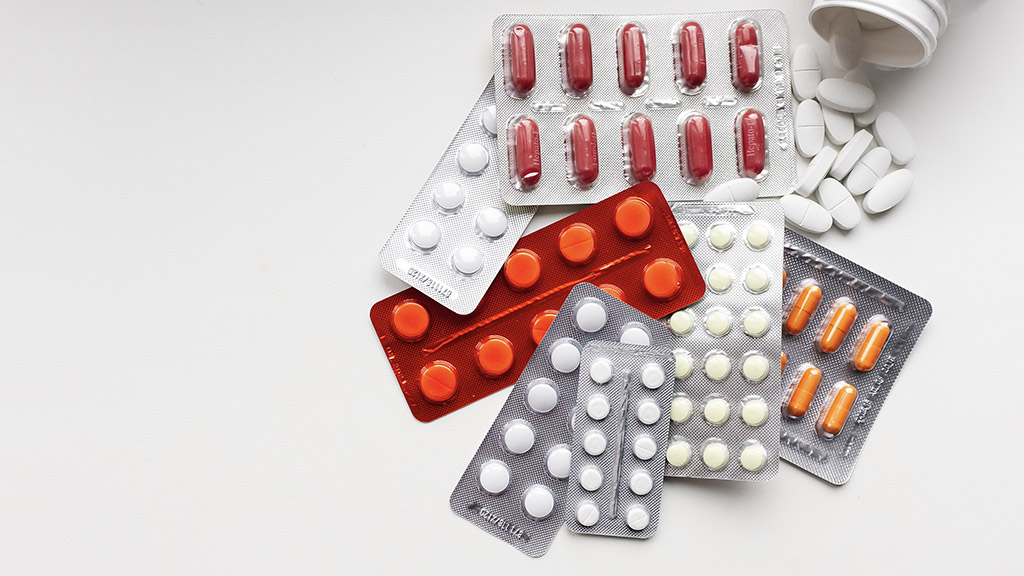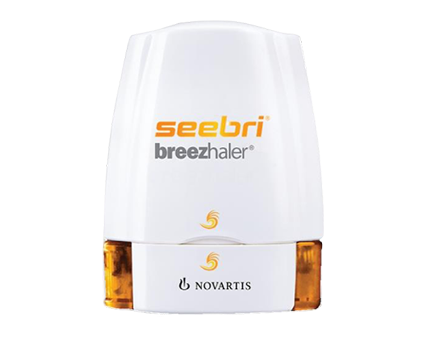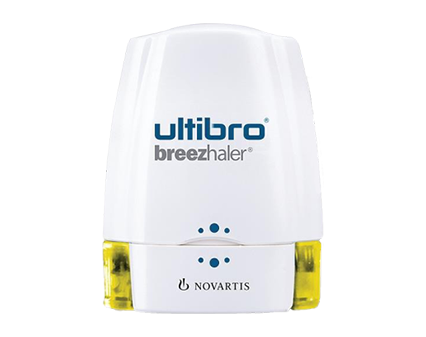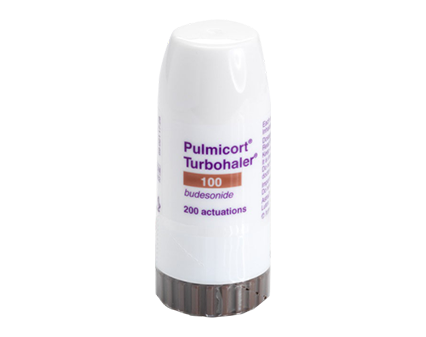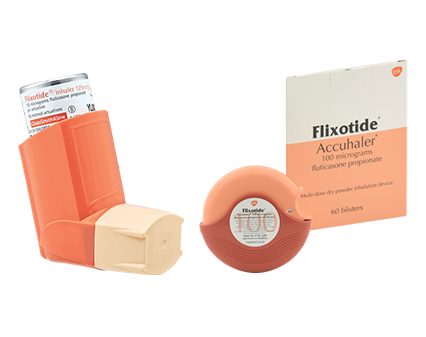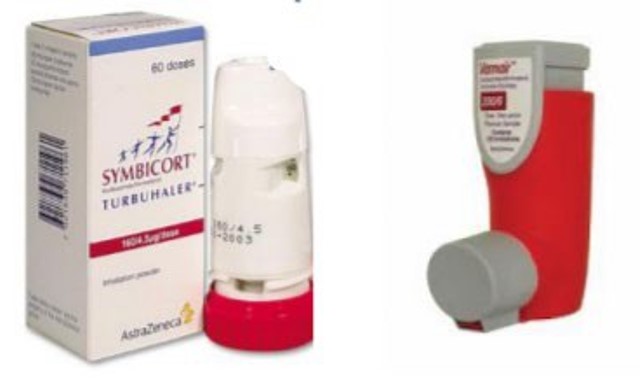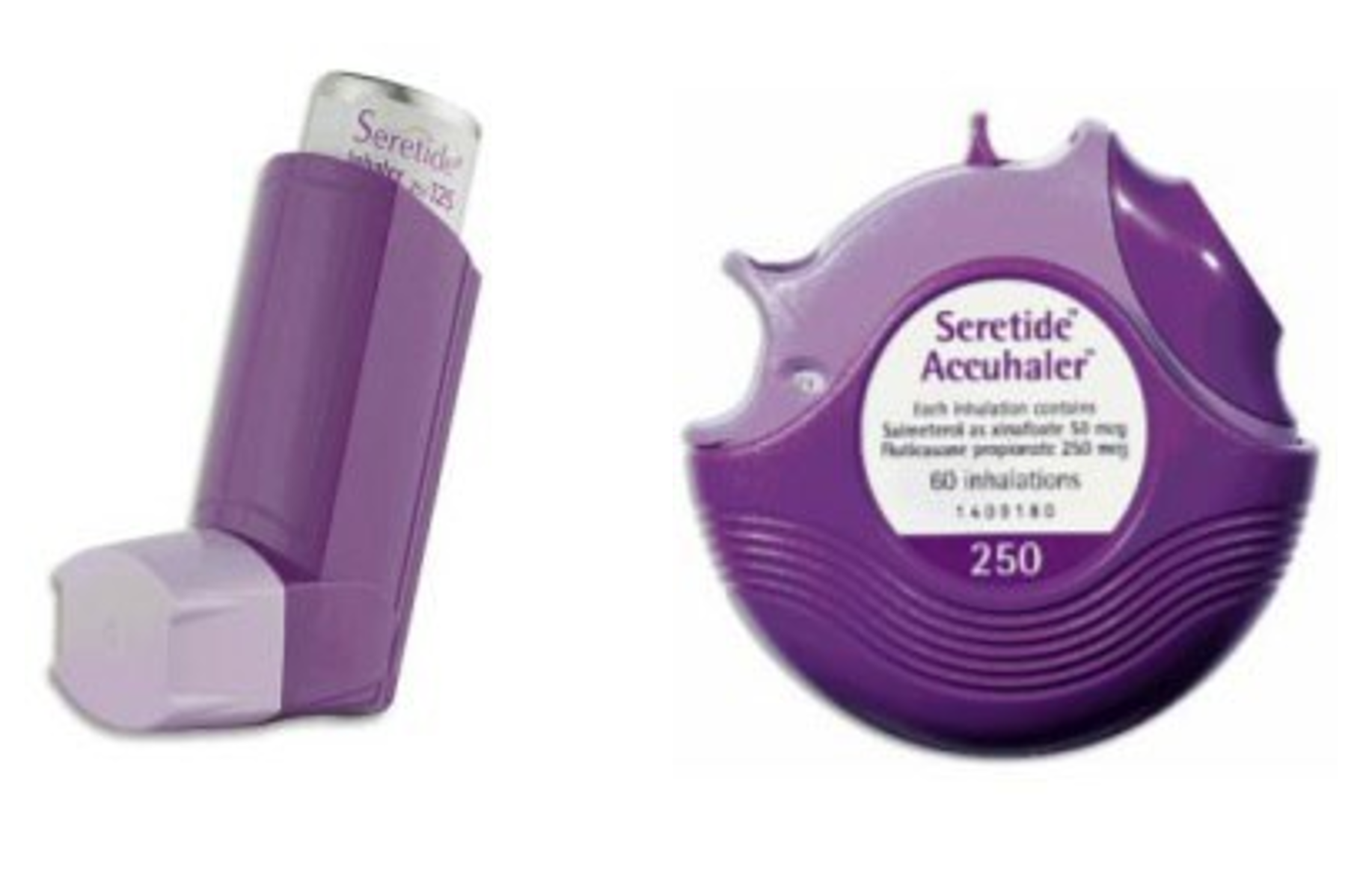Assessment Information
There are six assessments due in this module:
- 06A2 due at the end of Week 31
- 06A3 due at the end of Week 32
- 08A1 due at the end of Week 32
- 06A4 due at the end of Week 33
- 06A5 due at the end of Week 34
- 06A6 due at the end of Week 34
These are all theory-based assessments.
Nau mai, hoki mai, welcome back to another week of online learning. This week, you will revisit and begin to apply your knowledge of pharmacology - how medicines and drugs work in the human body and how dispensed medicines can treat different health issues.
Later this week, you will take a deep breath before plunging back into the respiratory system, where we check out disorders and ways to manage and treat them.
Me ruku ki te kaupapa, let’s dive into the topics.
Welcome to another session of Patient Care 2, where we transition from our study of the human body to a detailed exploration of pharmacology and its impact on the body.
In an earlier segment of this programme, you were introduced to the basics of pharmacology. While it may have been some time since that introduction, as you delve into the material, you'll likely find many terms and concepts becoming familiar.
Pharmacology Recap
As you may remember, pharmacology is the scientific study of drugs and how they interact with the body, including:
- Pharmacokinetics (how a drug is absorbed, distributed, metabolised, eliminated by the body).
- Pharmacodynamics (how a drug affects the body's cell receptors, ion channels and enzymes).
You may recall this helpful diagram from your first week of learning.
Understanding pharmacology is crucial for healthcare professionals, as it informs decisions about drug selection, dosage, patient care and advice.
Terminology and Concepts
Some of the following will be familiar, and some will be new. As we venture through this content, we encourage you to use your glossary! Add new terms, concepts and definitions and revisit and amend some you already have. As your learning grows, you might be surprised at how easy it is to recall and understand the terminology.
Challenge yourself to recall or guess the definitions for each of these terms/ concepts before you select the (+) symbol to expand each label.
- The amount of the dose that reaches the systemic circulation over time after a particular route of administration.
- Different drug forms and routes of administration can result in varying bioavailabilities for the same drug depending on absorption, first-pass metabolism and other factors.
- Bioavailability is 100% for intravenous injection.
- Usually, we talk about oral bioavailability. For example:
- If we swallow 1000mg of a drug, and 1000mg arrives in the bloodstream, then this drug would have 100% bioavailability.
- If 750mg arrives in the bloodstream, it would have 75% bioavailability.
- If only 100mg reaches the bloodstream, it would have 10% bioavailability.
- This is achieved when a drug gives desirable and beneficial results.
- The specific concentration or amount of a drug in the blood or target tissue that is considered effective for producing the desired therapeutic effect.
- This gives an indication of the lowest blood level a drug needs to be to give a therapeutic effect and the highest blood level before it becomes toxic (the maximum effective concentration).
- Therefore, concentrations below the therapeutic range may be ineffective, while concentrations above the range may lead to toxicity.
- The ratio of the level of drug necessary for a therapeutic effect to the level that will cause toxicity.
- In simple terms, it compares the amount needed to work with the amount that is dangerous.
- It provides a measure of the relative safety of a drug.
- The higher the index, the safer the drug. A drug with a low therapeutic index is said to have a ‘narrow index’.
- Narrow or low therapeutic index drugs require careful monitoring and precise dosing to ensure the drug remains within the therapeutic range. Any small changes in dose could result in the drug not working or becoming toxic.
- Examples of narrow index include lithium, digoxin, warfarin and vancomycin.
- This is a measure of how much drug can be eliminated from the body over time.
- It is measured in litres per hour – l/hr.
- This is a measure of how well the kidneys are working. Kidney function is important because most drugs leave the body via the kidneys in the urine.
- Creatinine is a substance found in the blood which is filtered by the kidneys. Therefore, it can be used as an estimate of the glomerular filtration rate.
- This is how long it takes from when the drug is administered for the drug to give a therapeutic effect – that is, it reaches its Minimum Effective Concentration (MEC).
- The half-life of a drug means how quickly a drug is eliminated from the body.
- A longer half-life typically refers to longer than 24 hours. They can range from days to weeks. A shorter half-life typically refers to shorter than 24 hours. They range from minutes to hours.
- Drugs with a longer half-life are eliminated more slowly, so they remain in the body for a longer duration; therefore, they typically require less frequent dosing. If these drugs are taken more frequently than the time it takes for half of the drug to be eliminated, the drug will build up to toxic levels.
- Drugs with a shorter half-life are eliminated more rapidly and require frequent dosing to sustain therapeutic concentrations. If these drugs are not given frequently enough, they will not be effective, and the desired results may not occur.
- The maximum blood level achieved after a single dose of the drug.
- This is how long the therapeutic effect lasts.
- The period starts when the drug reaches minimum effective concentration after administration and lasts until it is dropped to minimum effective concentration after reaching peak effect/concentration.
- A steady state is achieved when a drug given at regular intervals reaches a steady concentration in the body. It takes four to five half-lives for this to happen.
Your turn!
Kei a koe te rākau ināianei, it’s your turn now to check your understanding of these terms.
Answer the following four questions.
Pharmacokinetics
Pharmacokinetics is all about what happens to the medicine after administration, or ‘how the body affects the drug’.
It deals with how a drug is:
- absorbed into the body: Absorption.
- distributed within the body into various tissues: Distribution.
- metabolised (changed) into a form that can be excreted: Metabolism.
- excreted and eliminated from the body: Excretion.
Let’s look closer at each of these processes: absorption, distribution, metabolism and excretion.
Absorption
Absorption is how a drug moves from the site of administration into the bloodstream. This is how a drug becomes available for use by the body. Absorption is only necessary when drugs are administered orally. Other routes of administration allow the drug to enter directly into the systemic circulation and do not require absorption.
When a drug is administered orally, it is swallowed and enters the stomach. Most drugs are absorbed in the small intestine, so by the time they arrive here, they must be released from the dose form and dissolved. Once dissolved, the drug molecules pass through the lining of the small intestine, into the blood vessels that become the portal vein, and into the liver.
Before you read on, take a few minutes now to whakaaro (consider) what factors can affect the absorption and onset of action of a drug. You might like to jot them down on a piece of paper or open a new document to type them down. This is a good way to draw on and make connections to your existing knowledge.
Are you ready?
Factors that affect absorption and onset of action include:
Route of administration
- Drugs intended for a systemic effect need to get into the bloodstream.
- Absorption is rapid (seconds or minutes) when drugs are administered via the following routes: intravenous, inhaled or sublingual.
- Other routes, such as subcutaneous, oral, or intramuscular, are slower because the drugs need to pass through the skin, gastric mucosal layers, or muscles before reaching the bloodstream.
Dosage form
- Drugs must be freed from their dosage form to be absorbed.
- The time taken for the drug to be released from the dosage form varies. e.g. a solution of a drug, where the drug is already dissolved, will absorb much faster than a tablet because the tablet needs to dissolve before the active ingredient can be absorbed.
Food in the stomach (oral administration)
- Particularly high fat and solid food delays gastric emptying, so the drug takes longer to reach the small intestine, where it will be absorbed.
First pass metabolism
- Drugs absorbed in the small intestine (orally) travel to the liver before they reach the rest of the body.
- Many drugs are metabolised in the liver, so less active drug is available to achieve the desired effect. This effect only happens in oral administration, as routes where the drug enters directly into the systemic circulation bypass the liver.
Other drugs
- One drug can have an effect on another, causing interactions that may increase or decrease drug absorption, depending on the interaction.
How did you do? Did you think of all of these factors before reading them? Give yourself a pat on the back for all of those you got correct, and note down any that you missed.
Distribution
This is the process of a drug travelling through the bloodstream to reach the target cells and tissues.
Again, you may wish to challenge yourself and take some time now to jot down all the factors that you think might affect the distribution of a drug.
Haere whakamua, moving ahead, let’s see how you got on.
Distribution depends on the following:
Blood flow
- Organs that have a large supply of blood, such as the heart, liver, and kidneys, receive the drug very quickly, while tissues with lower blood flow, like fat or adipose tissue, receive the drug much slower.
Solubility (the ability of a substance to dissolve into a liquid)
- Lipid (fat) soluble drugs cross cell membranes easily (water-soluble drugs don’t), and therefore, distribution is rapid.
- Lipid soluble drugs also cross the blood-brain barrier easily to enter the central nervous system.
Protein binding
- As molecules of drugs travel through the body, they come into contact with proteins such as albumin. Sometimes, the drug molecules will bind to the proteins.
- The proportion of the drug bound to these plasma proteins becomes inactive. This means only the proportion of the drug that remains unbound (or ‘free’) is active and can do its intended job.
- Drugs that are more than 80% protein-bound are described as ‘highly protein-bound’.
And now, we move on to metabolism.
Metabolism
- Metabolism is the chemical alteration of drugs within the body to facilitate their elimination. This involves transforming the drug into metabolites that are more water-soluble.
- Most drugs are metabolised into inactive forms (metabolites) and then excreted.
- Some drugs can be given as inactive drugs (pro-drugs), which don’t become active until they are metabolised.
- The primary site of drug metabolism is the liver, although other tissues such as the kidneys, lungs, and intestines also contribute.
- Enzymes in the liver metabolise most drugs, but metabolism can also occur in the intestines, blood, and kidneys.
- Different enzymes break down different types of drugs (and foods and other chemicals).
- The enzymes can only handle so much drug at a time, so if a dose is too high, the body can’t break it down as fast as it should, so blood levels will be high – maybe even toxic. If more than one drug is competing for the same enzyme, there may also be a build-up of the drug in the body. This is because one drug will be preferentially metabolised over another.
You know the drill: jot down the factors that you think affect metabolism and compare your answers after this section.
Factors affecting metabolism include:
Genetics
- Genetic variations can cause differences in how drugs are metabolised, and some people may even lack certain enzymes to metabolise drugs. Some people may have a highly active enzyme system that is able to break down drugs that use this pathway quickly, and others may have a less active system, so the drug is metabolised more slowly.
Examples
- Deficiency of the aldehyde dehydrogenase enzyme (ALDH), which is necessary to metabolise alcohol.
- Deficiency of glucose-6-phosphate dehydrogenase (G6PD), which may cause the destruction of red blood cells. People with this deficiency must avoid drugs that are broken down by this enzyme, such as nitrofurantoin, ciprofloxacin, norfloxacin, co-trimoxazole, and sulfasalazine.
- Many people of African heritage have a genetic variation that means that they don’t respond to beta blockers when given for hypertension.
- Patients who metabolise certain drugs rapidly may require higher, more frequent doses to achieve therapeutic concentrations. This is because the drugs are broken down faster.
- Patients who metabolise certain drugs slowly may need lower, less frequent doses to avoid toxicity, as the drugs won’t be broken down as fast as they should be and will build up in the body.
- Up to 10% of NZ Caucasians have a genetic variation of the CYP2D6 enzyme, which converts codeine (inactive form) to morphine (active form). We call this a pro-drug. Codeine is changed to morphine at a faster rate. These people are called ultra-rapid metabolisers and are at risk of developing opioid toxicity and side effects at low doses. A patient who comments that Panadeine makes them very sleepy is probably an ultra-rapid metaboliser.
- Another 10% of NZ Caucasians have a variation of the CYP2D6 enzyme that makes them ‘slow metabolisers’, so the conversion of codeine to morphine is slower. These people may not obtain pain relief, as their morphine blood levels will be low.
Disease
- Disease, particularly liver disease (because the liver is where most metabolism occurs), can reduce metabolism. Kidney disease can affect the excretion of drugs and may require a dose adjustment. Heart failure reduces circulation, slowing the rate of metabolism and reducing excretion.
Age and weight
- Infants and children are usually dosed by weight, but the ‘ideal body weight’ must be taken into consideration if a child is very small or very large.
- The elderly. Age-related changes to metabolism and excretion. Blood supply to the liver decreases, and liver enzymes become less active, so metabolism is slowed. This may result in higher blood levels.
- The kidneys excrete most drugs. By the age of 80, kidney function may be half that of a 40-year-old, so drugs may accumulate in the bloodstream.
- Body weight: Drug doses are usually given as mg/kg.
- If a patient is obese, then dosing this way may result in toxicity.
- If the patient is underweight, the dose may be too low to give a therapeutic effect. This is particularly important when the drug has a narrow therapeutic index. For this reason, doses are usually calculated using ‘ideal body weight’.
Excretion
This is how the drug leaves the body. The kidneys excrete most drugs, so they leave the body in the urine. Other methods of excretion are via the lungs, skin, gastrointestinal system, sweat, salivary and mammary glands.
People with kidney disease or reduced kidney function may need adjustment to drug doses.
Knowledge Check
How much did you already know (or accurately hypothesise) about these four parameters of pharmacokinetics?
Complete the following eight-question quiz to consolidate your learning of absorption, distribution, metabolism and excretion.
Self-directed learning activity
To help you embed the concepts we have explored in this session, Professor Dave is joining us to guide you through pharmacokinetics. Before you watch his video, write down these two questions:
- How do drugs move around the body?
- Do they stay in the body indefinitely, or are they eventually removed?
Professor Dave will explain these as you watch, so ensure you capture his explanations. You can do this in whatever way you want, e.g., write notes, create a new journal post, or draw yourself a mind map. Taking your own notes while you watch will create a very useful resource for your future learning, as well as help you to process the information.
Post-watch Task
What is one new piece of information you learned from the video?
Summarise it in your own words and share it in this week's forum: SDL: Pharmacokinetics: How Drugs Move Through The Body. Taking the time to write a concept in your own words helps to create deeper neurological connections with the subject and connect it to what you already know.
Make sure to check your peers' comments, too. This will help you to confirm your understanding and view the material from a different perspective.
Haere mai, welcome back to Anatomy and Physiology. In this session, we look at respiratory system disorders.
Respiratory System Recap
Previously in Patient Care 2, we explored the structures of the respiratory system and noted that the function of this system is to:
- Work with the cardiovascular system to deliver oxygen to the body and remove carbon dioxide in a process known as gas exchange.
- Filters out microbes and particles from the air we breathe.
The respiratory system also:
- Regulates blood pH in coordination with the kidneys by controlling the levels of carbon dioxide (CO2) in the blood.
- Aids in regulating body temperature through evaporation during exhalation by releasing warm, humid air during exhalation.
Fill in the blanks in the following activity to check your knowledge and understanding of this system.
Breathing and the Diaphragm
A structure of the respiratory system we have not focused on previously is the diaphragm. The diaphragm is a dome-shaped sheet of muscle that separates the thorax (chest) from the abdomen. It is attached to the spine, the lower pairs of ribs, and the lower end of the sternum (breastbone).
There are openings in the diaphragm for the oesophagus, the phrenic nerve (which controls the movements of the diaphragm to produce breathing), and the aorta and vena cava blood vessels, which lead to and from the heart.
Role of the Diaphragm
The diaphragm plays a vital role in breathing. When breathing in, known as inhalation or inspiration, the diaphragm contracts and moves downward, while the external intercostal muscles between the ribs contract, lifting the ribcage.
These coordinated movements increase the space in the chest cavity and decrease the air pressure within the lungs. As a result, oxygen-rich atmospheric air rushes into the lungs through the nose and mouth, filling the expanded space. Gas exchange now occurs between the alveoli of the lungs and the capillaries that surround them.
When breathing out, known as exhalation or expiration, the diaphragm relaxes and moves upward, and the external intercostal muscles relax, causing the ribcage to lower. These actions decrease the space in the chest cavity and increase the air pressure within the lungs. As a result, the carbon dioxide-rich air is pushed out of the lungs through the nose and mouth and expelled into the atmosphere.
Have a look at it in action here.
The respiratory centre in the brainstem controls breathing, requiring no conscious effort for the inhalation and exhalation of air. However, the depth and rate of breathing can be consciously adjusted. Receptors in the body continuously monitor blood carbon dioxide and oxygen levels, as well as the blood pH, which must be maintained within the range of 7.35 to 7.45. In response to these parameters, the body constantly adjusts the breathing rate to regulate the excretion of carbon dioxide and keep the blood pH levels within range.
Respiratory System Disorders
Asthma (Mate huango)
Aotearoa, New Zealand, has one of the highest rates of asthma in the world; therefore, it is a disorder you will encounter frequently in your role as a pharmacy technician (and you might even have personal experience or knowledge of it).
It is important that you have a good understanding of this disorder and the treatments so that you can provide safe, effective and personalised advice and care. Your expertise will ensure that patients leave the pharmacy with the knowledge and tools needed to manage their respiratory health effectively.
Take a look at these key statistics from the Asthma and Respiratory Foundation of New Zealand (n.d.) that show how many people are affected by this disorder.
Journal post
Asthma
- Create a new journal post titled ‘Asthma’.
- Flex your independent learning muscles by carrying out rangahau (research) to find answers to the following questions about asthma.
- As your tutor may review your mahi, publish your post to ‘All course users’.
- Save the permalink to your Index of Journal Posts. This will allow you to check for feedback and use your hard work for future reference.
Questions
- Explain what asthma is by describing the organs involved and how they are affected by this disorder.
- The causes of asthma are thought to be genetic and environmental factors. Explain what this means and give examples of environmental factors.
- What are the common symptoms of asthma?
- What are the severe symptoms?
- Identifying personal triggers of asthma and avoiding them is one way to manage this disorder. Describe the common asthma triggers.
Treatments for Asthma
Asthma cannot be cured, but it can be managed with self-care measures and pharmacological treatments.
Complete this quiz to check your existing knowledge.
Tip
Terminology
In the context of the classification of respiratory medications you will notice the terms ‘agonist’ or ‘antagonist’ are used. These terms refer to the medicine's interaction with specific receptors in the body.
- An agonist is a medicine that activates receptors, leading to the desired effect.
- An antagonist is a medicine that blocks or inhibits the action of receptors, leading to the desired effect.
Inhalers
Most asthma medications are inhaled directly into the lungs and taken via an inhaler device. The dose form may be a:
- metered-dose inhaler (MDIs),
- liquid medication in a pressurised canister or
- dry powder inhaler (DPIs).
Let’s take a look at the different therapeutic groups of asthma medications. Select the (+) symbols to discover each group’s description.
- SABAs are referred to as bronchodilators. They stimulate beta2 receptors in the lungs, causing smooth muscle to relax and resulting in bronchodilation, making breathing easier.
- They provide quick relief during acute asthma symptoms or attacks and last around 6 hours.
- They should only be used as relievers when needed.
- LABAs also stimulate beta2-adrenergic receptors in the bronchial smooth muscles to cause bronchodilation.
- They have a longer duration than SABAs, lasting up to 12 hours, which makes them suitable for long-term control of asthma symptoms.
- LABAs are used for long-term control and prevention of asthma symptoms.
- LABAs are ALWAYS used in combination with an ICS for better asthma control.
- Corticosteroids were developed from a naturally occurring steroid called cortisol.
- They have powerful anti-inflammatory properties to prevent inflammation and narrowing inside the airways.
- They treat the underlying cause of asthma by making the airways less sensitive to asthma triggers and preventing asthma symptoms over time.
- Oral corticosteroids are either given in a short burst to stop serious asthma flare-ups or, less commonly, in a low dosage as maintenance for severe asthmatics to prevent symptoms.
- As a treatment, they are given to decrease the inflammation, to halt severe asthma flares and to prevent hospitalisation. Once the asthma is under control, the patient returns to their normal treatment regime.
- The dose is given in a short burst of three to five days and then stopped so the patient is exposed to fewer doses.
- A nebuliser is a machine that converts liquid medication into a fine mist, which is breathed in through a mask or mouthpiece to the lungs.
- In most instances, a handheld inhaler device, together with a spacer, is just as effective as a nebuliser in getting medication to the lungs.
- Spacers are just as effective in acute asthma for adults and more effective for children than nebulisers.
- In some situations where the use of an inhaler device is not suitable, such as in young children or very sick people, using a nebuliser is an alternative.
Journal post
Asthma Treatments
What do you know about the different types of inhalers used to treat and manage asthma?
- Download and use your resources to complete as much of this worksheet as you can. AP - Asthma Treatments - Worksheet.
- Note: If you get stuck, chat with your tutor or pharmacy colleagues.
- Upload the completed worksheet to a new journal post titled ‘Asthma Treatments’.
- Publish your mahi to ‘All course users’.
- And, of course, save the permalink to your Index of Journal Posts.
Activity - Spacers
To make using an inhaler device easier and more effective, many adults and children will be advised to use a spacer. You will be familiar with spacers, which can be used with or without the addition of a face mask.
In this activity, you are a pharmacy technician providing advice to 4-year-old Olly and his parents. Before you get started, check out these useful resources, which will provide you with the information to support Olly.
Resources:
- Healthify: Spacers for inhalers
- Abraham The Pharmacist: How To Use A Spacer With Inhaler
Medication interactions for asthma
Certain medications have the potential to exacerbate (make worse) asthma symptoms in some people; therefore, they should avoid them.
These are:
- Aspirin and products containing salicylate acid, e.g. Bonjela and Orased Jel
- NSAIDs e.g. ibuprofen, diclofenac, naproxen, mefanamic acid, indomethacin, piroxicam, ketoprofen, tenoxicam, sulindac and tiaprofenic acid.
- Cardiovascular medicines, e.g. beta-blockers and ACE inhibitors.
- Eye drops for glaucoma.
- Natural products such as royal jelly.
COPD (Chronic Obstructive Pulmonary Disease) - Mate ia tuku
COPD is an umbrella term for a group of respiratory conditions that makes airflow in and out of the lungs difficult. It is a chronic and progressive disorder that affects many people in Aotearoa New Zealand as illustrated in this infographic .
Watch: What is COPD? […] (5:13 minutes)
This video covers the causes, physiology, symptoms, treatment and management of COPD. As you watch, pause the video to take notes for future reference. There will also be a quiz after the video to help you solidify the key points.
Emphysema & Chronic Bronchitis
Emphysema and chronic bronchitis are the two main conditions that contribute to COPD. These conditions are often found together.
Emphysema
In emphysema, the walls of the alveoli become damaged and lose their elasticity. During exhalation, these small airways collapse, and airflow is restricted. The air becomes trapped in the lungs as they are unable to empty.
The damage can also destroy the walls of the alveoli, leading to fewer and larger air sacs instead of many tiny ones. This results in a decreased surface area in the lungs for gas exchange to take place.
Signs and symptoms
- Shortness of breath, especially during physical exertion.
- Chronic cough.
- Wheezing.
- Chest tightness.
- Fatigue.
- Weight loss.
Chronic Bronchitis
Chronic bronchitis is characterised by persistent inflammation of the bronchial tubes, responsible for carrying air to and from the lungs. The airways become irritated and narrowed, leading to increased production of mucus that further obstructs airflow.
Signs and symptoms
- A persistent cough that produces mucus.
- Shortness of breath.
- Chest discomfort.
- Fatigue.
- Recurrent respiratory infections.
- Bluish tint to the lips or fingernails (indicating low oxygen levels in severe cases).
Treatments for emphysema and chronic bronchitis
Treatments that aim to ease the symptoms, prevent flare-ups and control the disease involve pharmacological and non-pharmacological therapies.
Non-pharmacological treatments include:
- Stopping smoking.
- Regular exercise.
- Pulmonary rehabilitation programme, which may include chest physiotherapy, lifestyle and nutrition advice.
- Getting an annual flu vaccination to help prevent chest infections.
- Avoiding irritants such as dust and smoke.
Pharmacological treatments include:
- Bronchodilators
- Inhaled corticosteroids (ICS)
- Combination inhalers
- Oral corticosteroids/ anti-inflammatory
- Antibiotics or macrolide antibiotics
Let's look at these more closely, as well as check out some examples for each.
Bronchodilators
| Description | Example | Image | |
|---|---|---|---|
| Short-Acting Muscarinic Antagonists (SAMAs) |
|
|
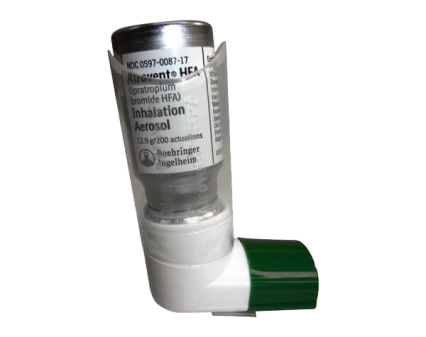 |
| Short-Acting Beta-Agonists (SABAs ) |
|
|
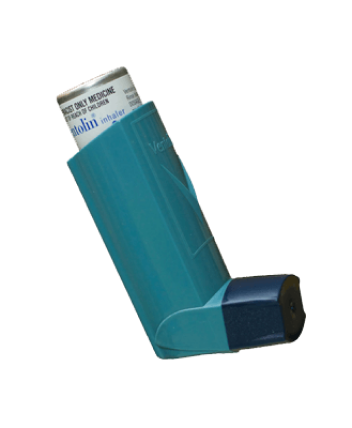 |
|
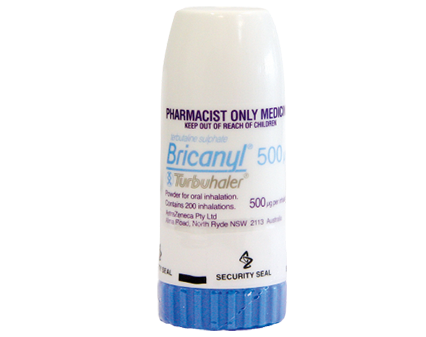 |
||
| SAMAs + SABAs (combination) |
|
|
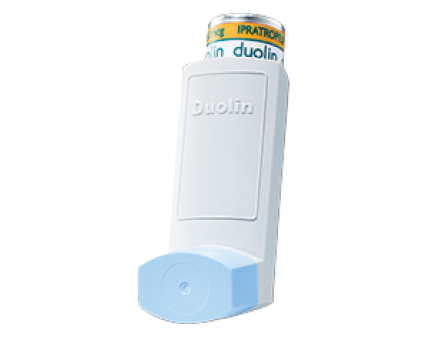 |
| Long-Acting Muscarinic Antagonists (LAMAs) |
|
|
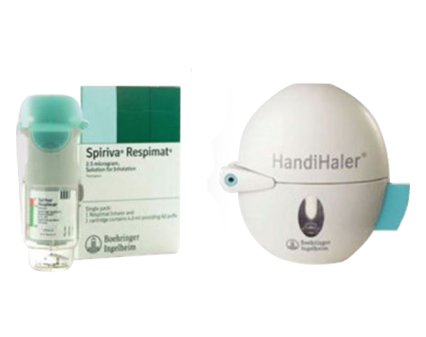 |
|
|
||
| Long-Acting Beta-Agonists (LABAs ) |
|
|
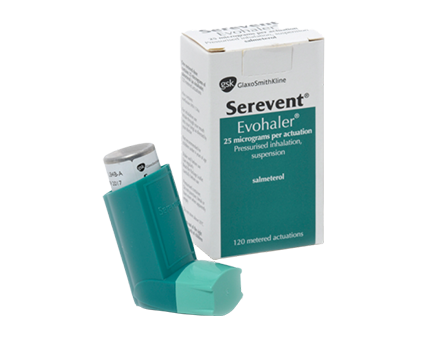 |
|
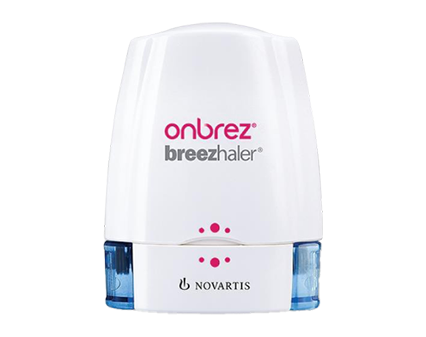 |
||
| LAMAs + LABAs (combination) |
|
|
|
|
|
Inhaled Corticosteroids (ICS)
| Description | Example | Image | |
|---|---|---|---|
| Inhaled Corticosteroids (ICS) |
|
|
|
|
|
Combination Inhalers
| Description | Example | Image | |
|---|---|---|---|
| Combination Inhalers |
|
|
|
|
|
Oral Corticosteroid/anti-inflammatory
Oral corticosteroids may sometimes be needed for worsening of COPD.
Example: Prednisone tablets.
Antibiotics or macrolide antibiotic
Because of the compromised airways and alveoli, COPD patients are at a higher risk of chest infections; therefore, antibiotics are prescribed during exacerbations or infections.
Macrolide antibiotics are a class of antibiotics that are commonly used to treat respiratory tract infections.
Example: Roxithromycin tablets.
Roxithromycin is a macrolide antibiotic. It is used to treat various bacterial infections by inhibiting bacterial protein synthesis, and it is effective against a range of bacteria, including respiratory tract pathogens.
Journal post
COPD Treatments
Now that we've completed our crash course on the different treatments for COPD use the content above and conduct your own rangahau (research) to complete this tūmahi (activity).
- Download and complete as much of this worksheet as you can: AP – COPD Treatments - Worksheet.
- Note: If you get stuck, chat to your tutor and pharmacy colleagues.
- Upload the completed worksheet to a new journal post titled ‘COPD Treatments’.
- Publish your mahi to ‘All course users’.
- Save the permalink to your Index of Journal Posts.
COPD Flare-Ups
As you saw in the COPD video, patients with COPD can experience flare-ups or exacerbations of the disease. This is when the disease becomes worse suddenly. Each COPD flare-up can cause long-term damage to the lungs and is a common cause of admission to the hospital.
Read this webpage to learn about COPD flare-ups. Make sure to read the section ‘Medicines for COPD’ and click on the hyperlink ‘quick relievers’. The hyperlink takes you to another webpage with a section on “Quick relievers' which gives information about bronchodilators that are referred to as ‘rescue inhalers’ for flare-ups. Healthify: COPD Flare-Ups.
Journal post
COPD Flare-ups
- Create a new journal post titled 'COPD Flare-ups'.
- Using the information from the video and your reading, make your own notes on the following key points.
- Causes or flare-ups
- Signs and symptoms of flare-ups
- What is the best way to manage COPD flare-ups
- Inhalers used to treat flare-ups
- How to avoid flare-ups.
- Publish your mahi to ‘All course users’.
- Save the permalink to your Index of Journal Posts.
Self-directed learning activity
Celebrate being a self-directed learner and use this week's SDL time to embed and build on your new learning from this week. You might like to:
- Add new words, concepts and information to your growing glossary. Challenge yourself to add at least three new terms!
- Find the answers to questions that may have arisen. Being curious and proactive plays a huge role in being an independent learner. This is a priceless skill to work on.
- Reflect on your experiences in the pharmacy workplace supporting and advising patients with respiratory disorders.
- Consider what respiratory medications you have dispensed - do you understand their actions, side effects, and key counselling points?
- What information from this week's learning has helped you feel more confident about how you can support and advise patients in the future?
Pai ki a koe, good on you - there was a lot of content to process in this session, so well done for staying focused. Make sure to complete the SDL to wrap up your learning for this week, and then treat yourself to a well-deserved break!
